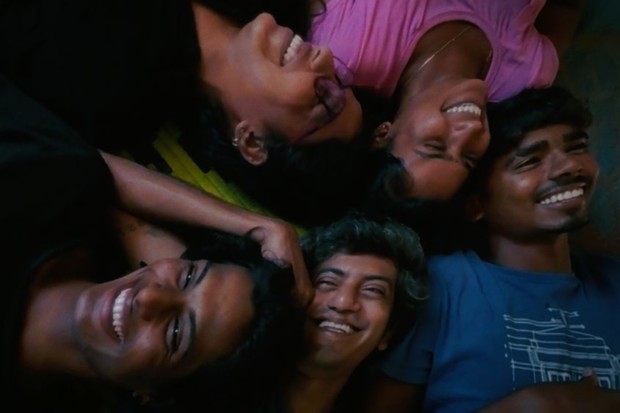Review: The Human Surge 3
by David Katz
- Argentinian director Eduardo Williams’ second feature, whose title is a wink at the notion of chronology, is a dazzling and curious piece of experimental filmmaking

As it was for De La Soul, and now for Eduardo Williams, three is the magic number. His first film, The Human Surge [+see also:
trailer
film profile], documented the lives of beautiful and doomed young people across his home country of Argentina, then Mozambique and the Philippines; now, in The Human Surge 3, its putative “sequel”, we alight on Peru and Taiwan, continental neighbours for two of those territories, as well as Sri Lanka. But crucially, the first Human Surge transitioned between these locales sequentially, whilst here, recurrent crosscutting – or, if we like, simultaneity – is the name of the game.
Williams has made yet another work, premiering in Locarno’s international competition, which cements his position at the forefront of global experimental film, especially in how that generic category rubs shoulders with the contemporary art world. It’s a glibly contradictory statement, but his output is really at once abstract and concrete: its essence, participants and image-making methods are completely vivid to us in our fragmented, globalised 21st century, but are offset by the glacial tempo employed in his editing, the lack of exposition and our estrangement from his authorial intentions. And, in keeping with Locarno’s programming, it expands the boundaries expected in documentary; reality is bent, broken, torn out of shape, yet reconstructed as something new.
Williams’ camera choice in this film is immensely pertinent to that last comment, perhaps liberating it from a more piercing sense of thematic depth, and making its concerns wholly related to the “image” (say that last word in a French accent, whilst mentally picturing Jacques Derrida, if you like). The entirety of The Human Surge 3 was captured with a 360° panoramic camera, affixed with eight lenses; these are rigs that capture VR-ready moving images to finally be viewed on headsets, only here, Williams’ footage is transposed onto a typical widescreen rectangle, suitable for cinema exhibition. This slightly off-centre use of the technology produces some marvellous and uncanny visual juxtapositions and manipulations; the exterior-shot actuality footage melts, sweeps and curves. Like many cutting-edge digital productions, camera angles can be determined exclusively in the editing stage; with this maybe-showy, but never indulgent, playfulness, he is basically guitar-soloing with the whole thing.
So what does all this have to do with these sites of supposed “alienation” and youthful arrested development, these countries remote from the Global North, or the “West”, which are typically subject to misleading and exoticising depictions? Abetted by Williams’ stylistic flexing and distortions, it’s sadly still an open question. The camera is set up so far away from his subjects that we can’t match the audio of their conversations to faces or lips moving; the subtitles, which have white- and yellow-coloured font to indicate audibly overlapping dialogue, can feel like an unrelated commentary on the images (as opposed to sound).
It’s impossible to attach names to the faces of the non-professionals he shoots, but what faces they are. Especially through what we glimpse in Peru, certain flecks of anger are noted: the Canadian salt mines are extracting their resources, and then there are the cordoned-off tourist enclaves populated by “millionaires and billionaires” that sit beside the marshes and the sloshing water current. One young man asks another, “What music do you like?”, which is answered by a jungle-set party sweatily soundtracked by digital cumbia, the homegrown electronic music genre. We’re witnessing, in all three places, natural landscapes that have existed for centuries, “observed” with tools of digital capture that create a slight undercurrent of surveillance. Maybe we can glimpse them on a 3D Google Earth rendering, on our phone or laptop, but it’s far better in the cinema, and through Williams’ eyes.
The Human Surge 3 is a co-production between Argentina, Portugal, Brazil, the Netherlands, Taiwan, Hong Kong, Sri Lanka and Peru. Its co-producers are Un Puma, Oublaum Filmes, Estúdio Giz, Revolver and Volos Films. International sales are courtesy of Rediance.
Did you enjoy reading this article? Please subscribe to our newsletter to receive more stories like this directly in your inbox.


















